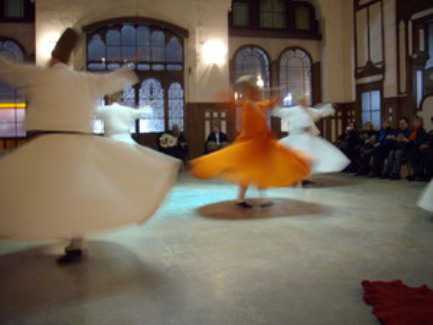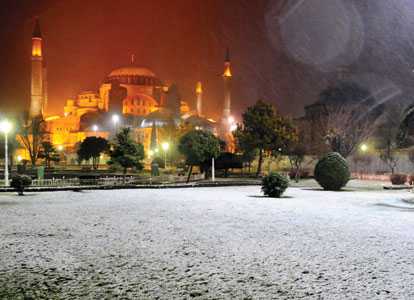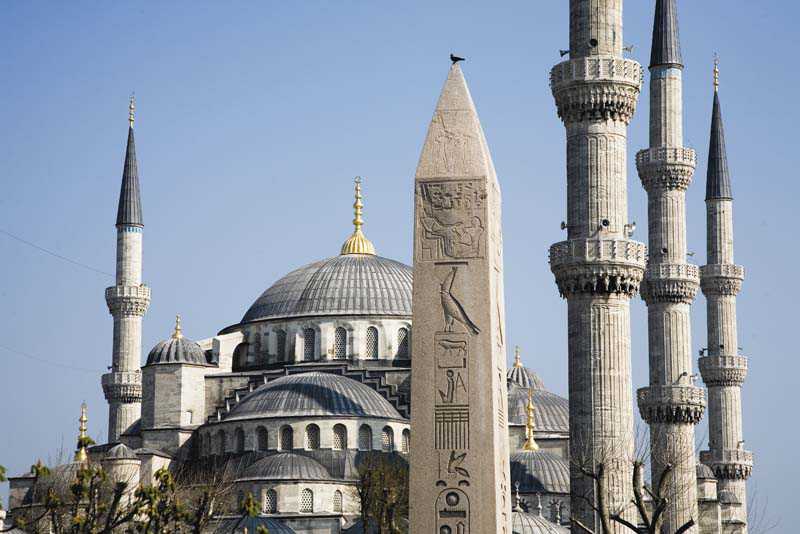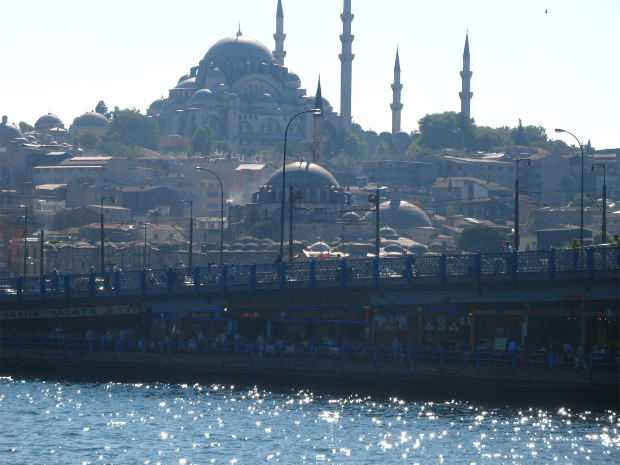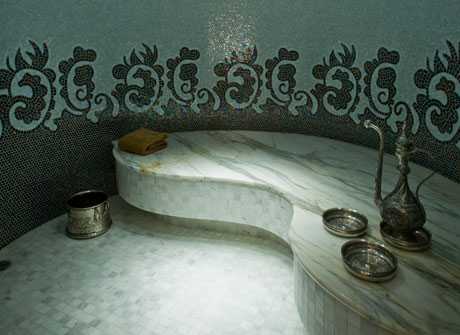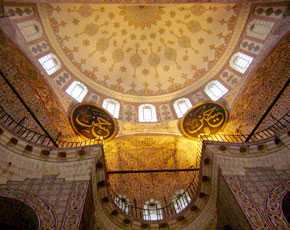 Kemal Ataturk, the founder of modern-day Turkey, said: “Culture is the foundation of the Turkish Republic.” Turkey has stayed true to its founder’s saying by preserving and making accessible the rich history of its land which spans over 5000 years. The remnants of these past civilisations are visited each year by thousands of tourists in Istanbul, Ephesus, Troy and many other locations
Kemal Ataturk, the founder of modern-day Turkey, said: “Culture is the foundation of the Turkish Republic.” Turkey has stayed true to its founder’s saying by preserving and making accessible the rich history of its land which spans over 5000 years. The remnants of these past civilisations are visited each year by thousands of tourists in Istanbul, Ephesus, Troy and many other locations
Turkey is a land of paradoxes. Its modern, vibrant population lives in the midst of rich Islamic heritage and the opulence of bygone kingdoms. Although 99 per cent of the population is Muslim, the larger cities of Istanbul, Izmir and Ankara have the vibe of a secular European country. .
Istanbul is a must-see for all travelers visiting to Turkey. It is the only city that lies on two continents and is a buzzing metropolitan and a busy sea-port. The city is dotted by rows upon rows of apartment blocks while houses are hard to spot. It gives the impression that most Turks have migrated to Istanbul and now live packed next to each other.
The cultural heart of Istanbul lies in its old city, called the Sultanahmet. As you travel towards the Old City you pass the giant Walls of Constantinople which are remnants of the Roman Empire. The district of Sultantahmet is a walking area and you can easily walk around and have a look at the main attractions within a few hours. Of course, most people spend up to three days exploring the district, mesmerised by its attractions, learning about its magnificent history.
The Topkapi palace is the one stop in Sultanahmet which can keep visitors engrossed for an entire day. It was made to house the Ottoman rulers and their families during their subsequent reigns. It has been the residence of eccentric individuals such as Ibrahim I who had 280 of his concubines drowned in the Bosphorus on suspicion of being unfaithful! The palace now houses exhibitions of these rulers’ possessions and the gifts they had received. The most stunning collection is found in the Chamber of the Holy Relics where articles from Prophets, companions and caliphs are kept. These items were shifted to Istanbul when the Caliphate transferred here. Many items were moved to Istanbul for protection from Wahhabi assaults on holy places in Medina. The holy mantle of the Prophet (PBUH), hair from the Prophet’s (PBUH) beard and a tooth broken in the battle of Uhud are kept in the chamber. Possessions of other prophets and companions such as the staff of Musa(as), the tray of Abraham(as) and the prayer rug of Fatima(rz) are also seen here among the many other holy items.
When the Ottoman Empire defeated the Romans and took over Constantinople (modern-day Istanbul), they converted their churches into mosques. The most well-known example of this is the Hagia Sophia, the largest cathedral in the world at its time. It was converted into a mosque in 1453, more than a thousand years after it was built as a church. It now serves as a museum after the country was secularied by Ataturk. Beautiful mosaics adorn the walls and domes of the Hagia Sophia which is currently undergoing a restoration process to uncover the mosaics covered over by plaster when the church was converted into a mosque.
The Blue Mosque of Istanbul holds striking similarity to the Hagia Sophia in its architecture, a design mimicked by other mosques in the city. Beautiful calligraphy is found in all these mosques which attract hundreds of worshippers and visitors every day. Vendors of scarves line the streets outside these mosques, making good profit from visitors who do not know of the policy of covering your head in order to go inside.
The largest marketplace in the world is also in Istanbul – the Grand Bazaar has over 3,000 shops. It is a well-preserved remnant of the Ottoman Empire; it was used as a trading place in Byzantine times and became the main market place under the Ottomans. It still maintains its high ceilings and painted domes despite befalling various natural disasters.
Amid the history, art and architecture of Istanbul you will also come across the feline inhabitants of this city. Turks love cats and this is obvious in the well-cared for appearance of stray. You might see locals feeding them, helping them down trees and even talking to them in public! Stray dogs also look much better than they would in other countries; all of them are tagged to show they have been neutered and are more or less tolerated by the people.
From the whirling dervishes and historic architecture to bustling market places and serene beaches, Turkey has much to offer.
Mahvish Zehra is a writer based in the US.
via The Dawn Blog » Blog Archive » Travelogue: A diverse culture.

